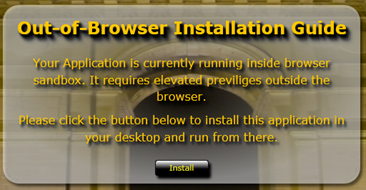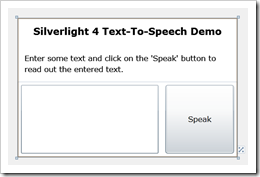In my previous article “Beginners Guide to Silverlight 4 PathListBox Control (Part-I)” I described about creating your very first PathListBox control in your Silverlight application followed by creating a Circular path to position the items in the circular edge. From that article, I think you are now familiar with it.
In this post, I will demonstrate you guys how to animate the items in a specific direction. This not only guide you for animation in PathListBox but also will help you understanding the StoryBoard creation (if you are very new to Silverlight). Read the whole article and at the end don’t forget to leave your comments.


 Microsoft has released Silverlight for the Symbian OS, which will allow your Silverlight applications to run in some selected Nokia handsets. Earlier, Silverlight was only available for web on desktop for Windows, Mac operating system. Later Moonlight came out, which is the linux version of Silverlight. Then Microsoft released Silverlight for Windows Phone 7 and this is the time for Symbian platform targeting mobile devices such as Nokia N97, N97 Mini XpressMusic etc.
Microsoft has released Silverlight for the Symbian OS, which will allow your Silverlight applications to run in some selected Nokia handsets. Earlier, Silverlight was only available for web on desktop for Windows, Mac operating system. Later Moonlight came out, which is the linux version of Silverlight. Then Microsoft released Silverlight for Windows Phone 7 and this is the time for Symbian platform targeting mobile devices such as Nokia N97, N97 Mini XpressMusic etc.
 Have you ever heard of Text to Speech engine? “Yes” I think. Yes, it is not a new thing in the Computer World. It was available since Windows 98 (as much as I can recall) but it is completely new in Silverlight. You can now use the Silverlight application to give an API call to the SAPI Engine which will convert the text to voice. Sounds Good? This is achievable using the COM APIs only.
Have you ever heard of Text to Speech engine? “Yes” I think. Yes, it is not a new thing in the Computer World. It was available since Windows 98 (as much as I can recall) but it is completely new in Silverlight. You can now use the Silverlight application to give an API call to the SAPI Engine which will convert the text to voice. Sounds Good? This is achievable using the COM APIs only.